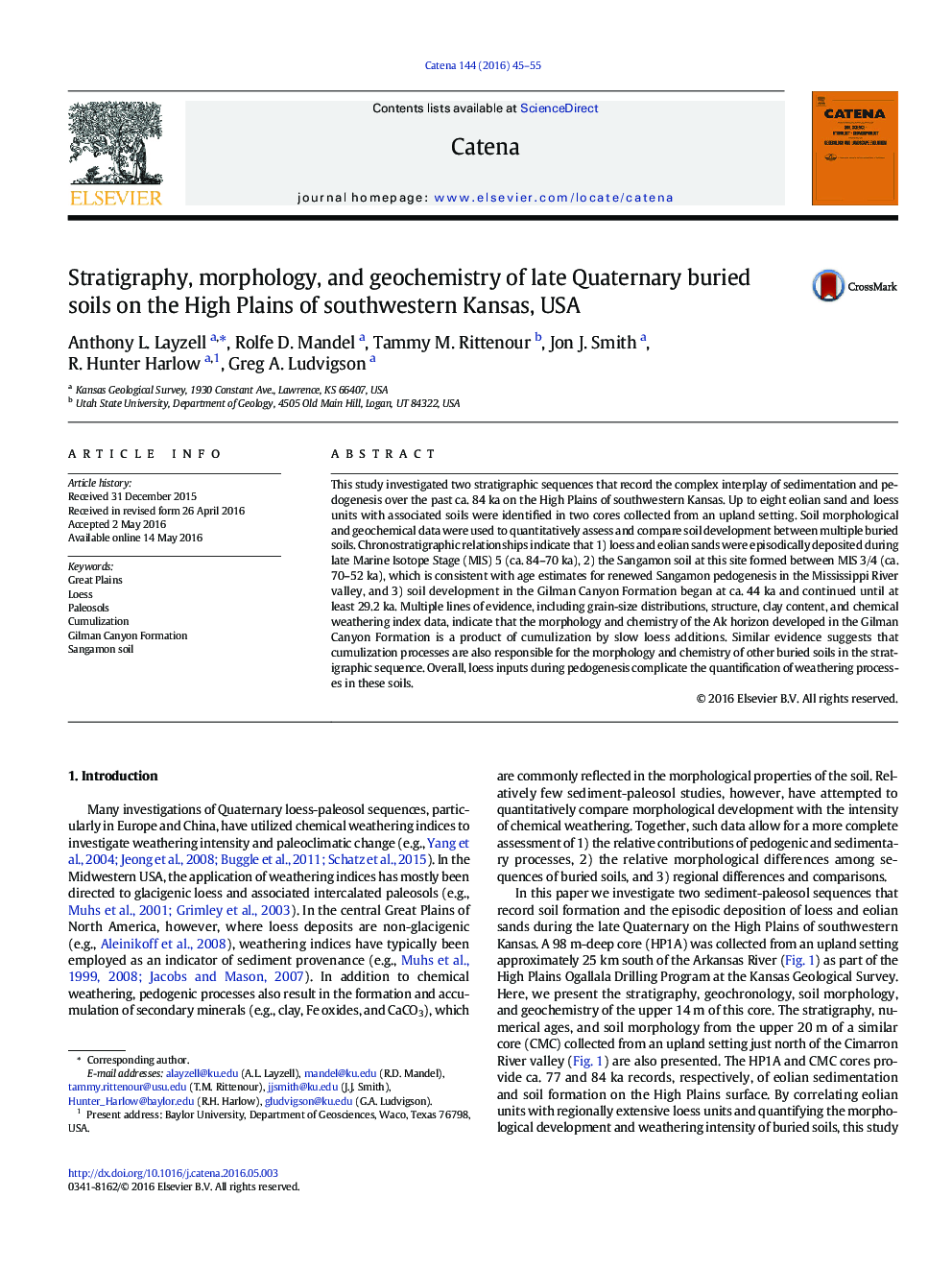| کد مقاله | کد نشریه | سال انتشار | مقاله انگلیسی | نسخه تمام متن |
|---|---|---|---|---|
| 4570827 | 1629208 | 2016 | 11 صفحه PDF | دانلود رایگان |
• We investigate two stratigraphic sequences from the west-central Great Plains, USA.
• Episodic eolian deposition and soil formation occurred over the last 84 ka.
• Up to 8 eolian units with associated soils were identified and regionally correlated.
• Soil morphology and chemistry were significantly affected by ongoing loess additions.
• Loess inputs complicate the quantification of weathering processes in these soils.
This study investigated two stratigraphic sequences that record the complex interplay of sedimentation and pedogenesis over the past ca. 84 ka on the High Plains of southwestern Kansas. Up to eight eolian sand and loess units with associated soils were identified in two cores collected from an upland setting. Soil morphological and geochemical data were used to quantitatively assess and compare soil development between multiple buried soils. Chronostratigraphic relationships indicate that 1) loess and eolian sands were episodically deposited during late Marine Isotope Stage (MIS) 5 (ca. 84–70 ka), 2) the Sangamon soil at this site formed between MIS 3/4 (ca. 70–52 ka), which is consistent with age estimates for renewed Sangamon pedogenesis in the Mississippi River valley, and 3) soil development in the Gilman Canyon Formation began at ca. 44 ka and continued until at least 29.2 ka. Multiple lines of evidence, including grain-size distributions, structure, clay content, and chemical weathering index data, indicate that the morphology and chemistry of the Ak horizon developed in the Gilman Canyon Formation is a product of cumulization by slow loess additions. Similar evidence suggests that cumulization processes are also responsible for the morphology and chemistry of other buried soils in the stratigraphic sequence. Overall, loess inputs during pedogenesis complicate the quantification of weathering processes in these soils.
Journal: CATENA - Volume 144, September 2016, Pages 45–55
